1952 Aston Martin DB3 Sports-Racing Two-Seater Registration no. UPL 4 Chassis no. DB3-5 Engine no. DP10133 (Supplied with the car)• 1952 Goodwood 9-Hours Winning Peter Collins/Pat Griffith • 1953 Sebring 12-Hours 2nd Place George Abecassis/Reg Parnell • 1952 Le Mans 24-Hours Peter Collins/Lance Macklin • 1953 Mille Miglia George Abecassis FootnotesThis beautifully-presented and - within its Historic racing category - provenly competitive Aston Martin DB3 sports-racing car is none other than the legendary marque's contemporary works team-entered winner of the 1952 9-Hours race right here at the Goodwood Motor Circuit, driven on that occasion by the fine pairing of future Ferrari Grand Prix winning driver – and so very nearly the 1956 Formula 1 World Champion - Peter Collins and Pat Griffith. This two-seat sports-racing car design with its muscularly-handsome Frank Feeley-styled light-alloy bodywork, was introduced by the Feltham-based company in 1952 as its first sports racing prototype. It's 'DB'-series model title derived from the initials of northern-English gear and machine-tool industrialist David Brown who had bought the already famous Aston Martin sports car marque – for £20,500 – in 1947. The Aston Martin DB3 was designed for David Brown by German engineering director Dr Robert Eberan von Eberhorst. He was a leading proponent of welded chassis-frame design using large-diameter parallel main frame tubes from which the front and rear suspensions could be hung, the engine and gearbox installed and a lightweight aluminium enveloping body attached. 'Eberan' as he was known had been a leading engineer with the epochal Auto Union Grand Prix team through the late 1930s when he had been principally responsible for the good-handling 3-litre V12-engined, de Dion rear-axled GP cars of 1938-39, in which none other than the Italian champion Tazio Nuvolari had won the Donington and Italian Grand Prix races, defeating the better-funded might of Mercedes-Benz. Laurence Pomeroy, highly respected Technical Editor of 'The Motor' magazine, then recommended the Austrian engineer to David Brown who engaged him initially as a design consultant but then as full-time chief engineer. Eberan would recall: "At Auto Union we looked at our work from a national viewpoint. But David Brown had bought Aston Martin as a hobby, in order to build special cars to his own ideas and to race them accordingly." "I was given the task of designing a completely new competitive sports car, new except for the engine which was to be the 2.6-litre Lagonda unit, and which was to be known as the DB3". "Like the Auto Union it had a tubular, girder-type frame with trailing link front suspension and transverse torsion bar springs. I also gave it a de Dion rear end with transverse torsion bars" – but von Eberhorst was to find that Aston Martin's racing budget was much more restricted than the State-backed Auto Union team's had ever been. "At Aston Martin it was an adventure to build even one standard car- we were always changing the prototype which had to be ready to race immediately." While the methodical Austrian was troubled by such 'Racer' attitudes, he much admired some of the team's contracted drivers, and especially Peter Collins whom he described as "a sort of English Bernd Rosemeyer, a very daring driver. Reg Parnell was very solid and stable but I would leave Aston Martin when I was invited to join the board of directors of the newly-formed Auto Union company in 1953...". Meanwhile his Aston Martin DB3 sports-racing car's definingly simple yet well proportioned and sleek bodywork, fronted by that distinctive 'portcullis' nose intake grille, proved to be extremely efficient aerodynamically when wind-tunnel tested by the Vickers aircraft company. It was certainly very well thought out, even its underside being carefully faired-in by undertray panelling – unusual for the time. These DB3 cars were powered initially by the twin-overhead camshaft 2580cc 6-cylinder Aston
1952 Aston Martin DB3 Sports-Racing Two-Seater Registration no. UPL 4 Chassis no. DB3-5 Engine no. DP10133 (Supplied with the car)• 1952 Goodwood 9-Hours Winning Peter Collins/Pat Griffith • 1953 Sebring 12-Hours 2nd Place George Abecassis/Reg Parnell • 1952 Le Mans 24-Hours Peter Collins/Lance Macklin • 1953 Mille Miglia George Abecassis FootnotesThis beautifully-presented and - within its Historic racing category - provenly competitive Aston Martin DB3 sports-racing car is none other than the legendary marque's contemporary works team-entered winner of the 1952 9-Hours race right here at the Goodwood Motor Circuit, driven on that occasion by the fine pairing of future Ferrari Grand Prix winning driver – and so very nearly the 1956 Formula 1 World Champion - Peter Collins and Pat Griffith. This two-seat sports-racing car design with its muscularly-handsome Frank Feeley-styled light-alloy bodywork, was introduced by the Feltham-based company in 1952 as its first sports racing prototype. It's 'DB'-series model title derived from the initials of northern-English gear and machine-tool industrialist David Brown who had bought the already famous Aston Martin sports car marque – for £20,500 – in 1947. The Aston Martin DB3 was designed for David Brown by German engineering director Dr Robert Eberan von Eberhorst. He was a leading proponent of welded chassis-frame design using large-diameter parallel main frame tubes from which the front and rear suspensions could be hung, the engine and gearbox installed and a lightweight aluminium enveloping body attached. 'Eberan' as he was known had been a leading engineer with the epochal Auto Union Grand Prix team through the late 1930s when he had been principally responsible for the good-handling 3-litre V12-engined, de Dion rear-axled GP cars of 1938-39, in which none other than the Italian champion Tazio Nuvolari had won the Donington and Italian Grand Prix races, defeating the better-funded might of Mercedes-Benz. Laurence Pomeroy, highly respected Technical Editor of 'The Motor' magazine, then recommended the Austrian engineer to David Brown who engaged him initially as a design consultant but then as full-time chief engineer. Eberan would recall: "At Auto Union we looked at our work from a national viewpoint. But David Brown had bought Aston Martin as a hobby, in order to build special cars to his own ideas and to race them accordingly." "I was given the task of designing a completely new competitive sports car, new except for the engine which was to be the 2.6-litre Lagonda unit, and which was to be known as the DB3". "Like the Auto Union it had a tubular, girder-type frame with trailing link front suspension and transverse torsion bar springs. I also gave it a de Dion rear end with transverse torsion bars" – but von Eberhorst was to find that Aston Martin's racing budget was much more restricted than the State-backed Auto Union team's had ever been. "At Aston Martin it was an adventure to build even one standard car- we were always changing the prototype which had to be ready to race immediately." While the methodical Austrian was troubled by such 'Racer' attitudes, he much admired some of the team's contracted drivers, and especially Peter Collins whom he described as "a sort of English Bernd Rosemeyer, a very daring driver. Reg Parnell was very solid and stable but I would leave Aston Martin when I was invited to join the board of directors of the newly-formed Auto Union company in 1953...". Meanwhile his Aston Martin DB3 sports-racing car's definingly simple yet well proportioned and sleek bodywork, fronted by that distinctive 'portcullis' nose intake grille, proved to be extremely efficient aerodynamically when wind-tunnel tested by the Vickers aircraft company. It was certainly very well thought out, even its underside being carefully faired-in by undertray panelling – unusual for the time. These DB3 cars were powered initially by the twin-overhead camshaft 2580cc 6-cylinder Aston

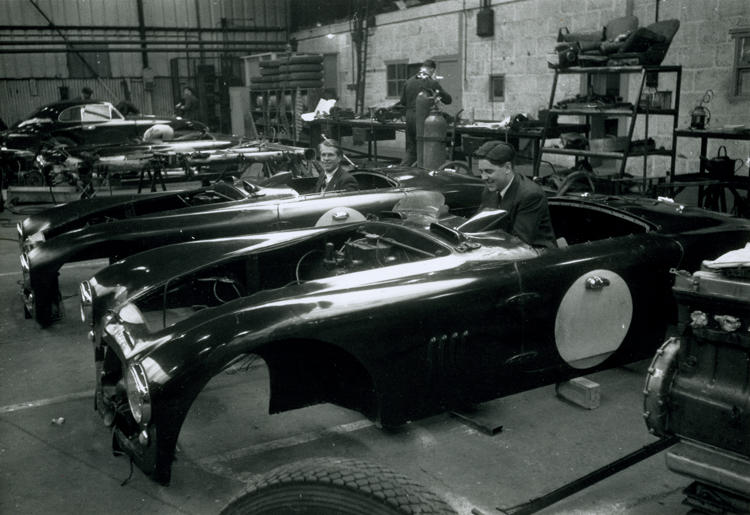
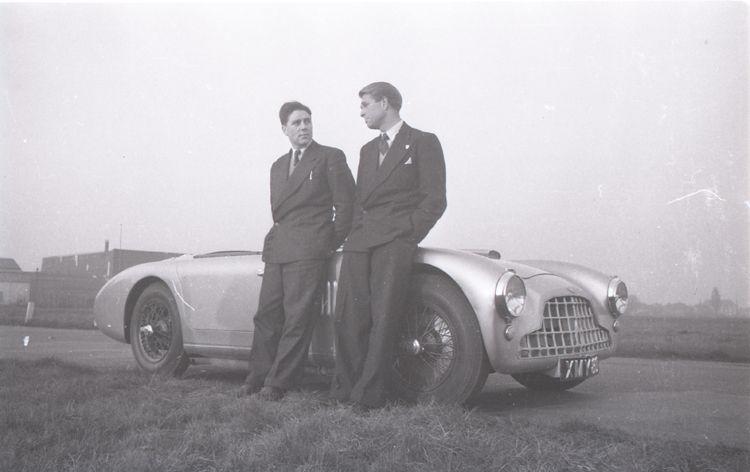
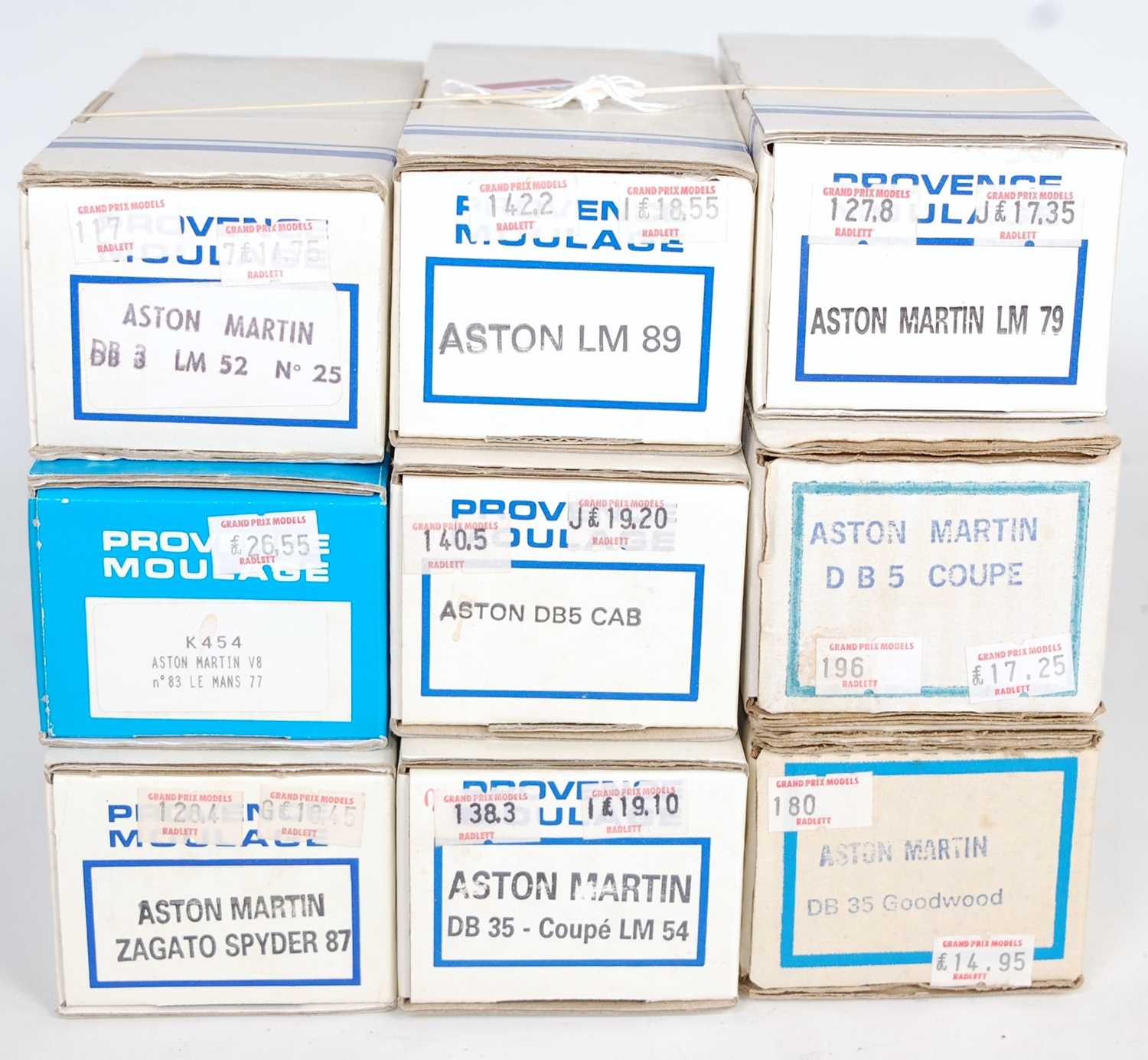
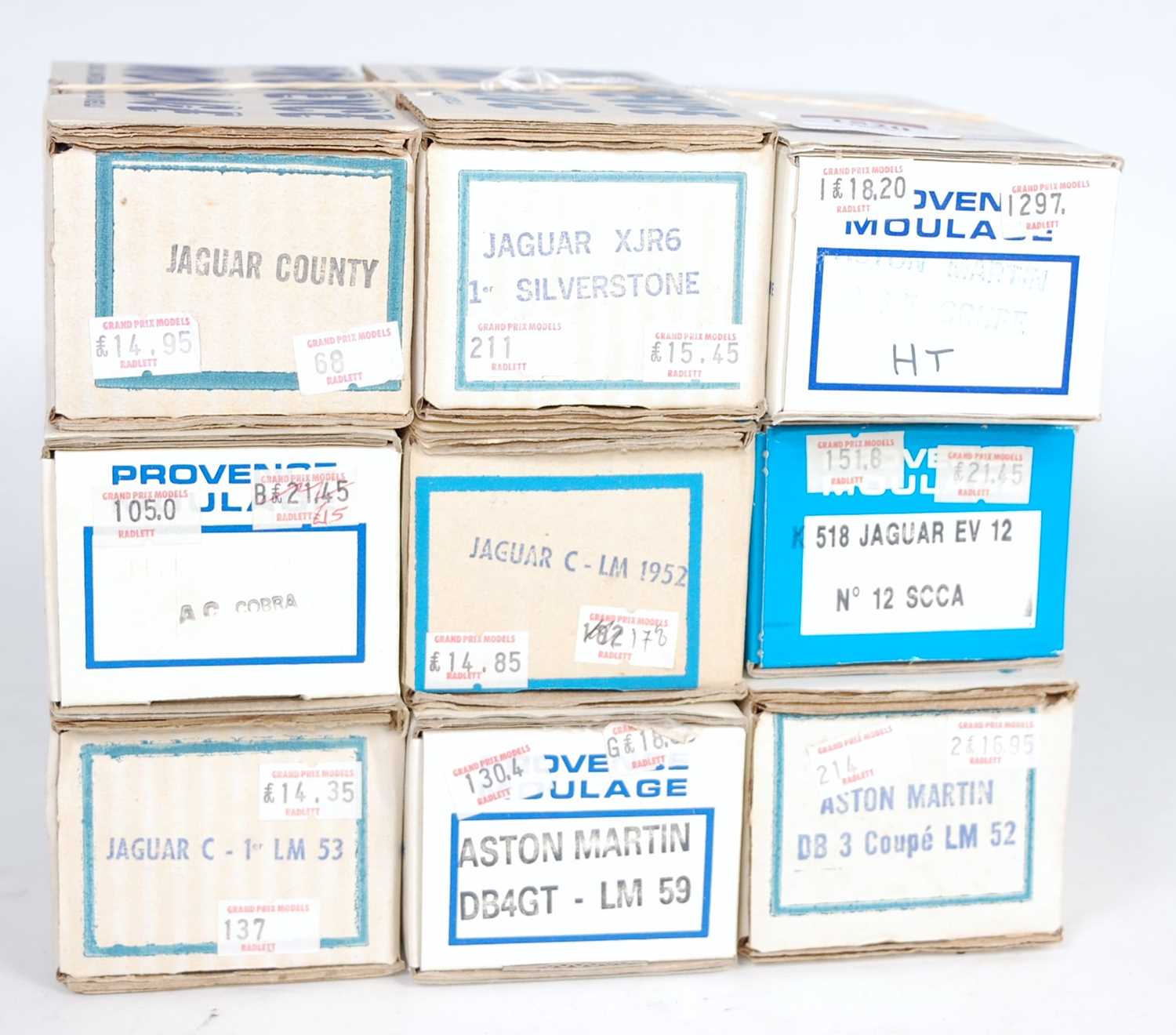

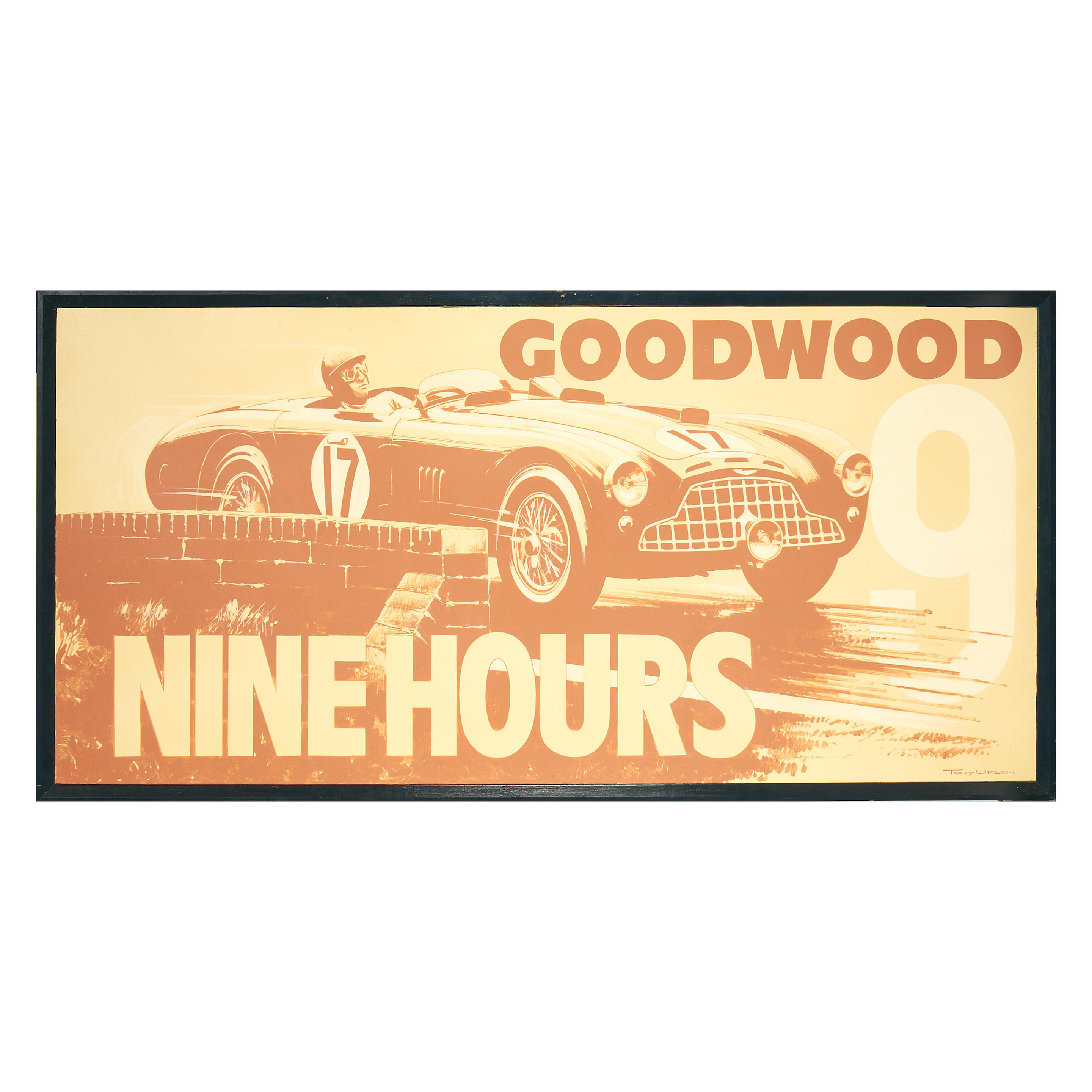
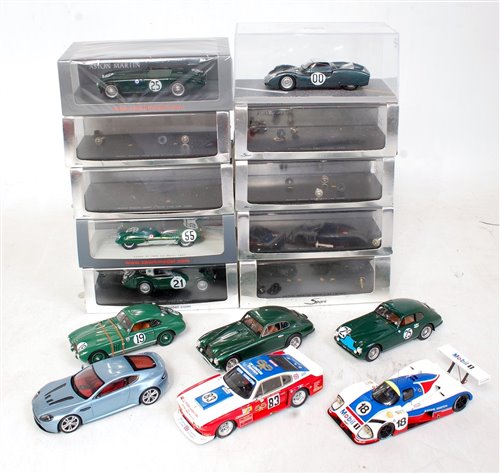
Testen Sie LotSearch und seine Premium-Features 7 Tage - ohne Kosten!
Lassen Sie sich automatisch über neue Objekte in kommenden Auktionen benachrichtigen.
Suchauftrag anlegen